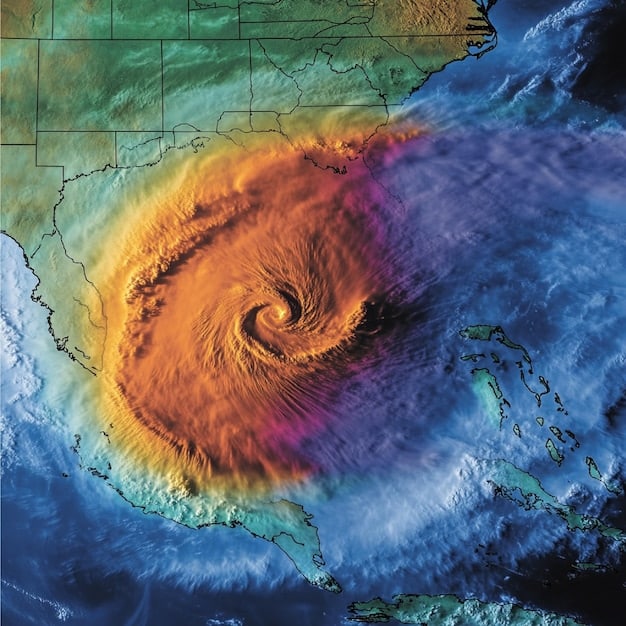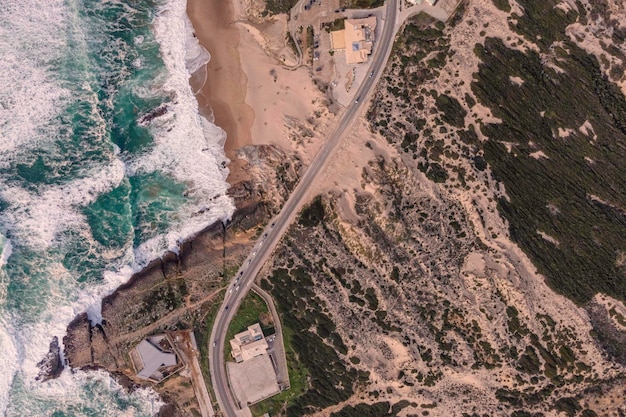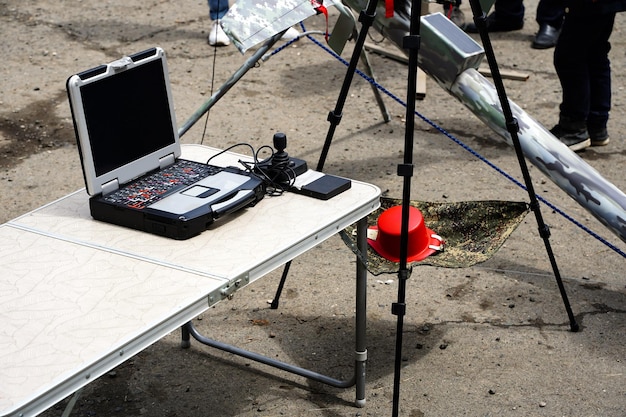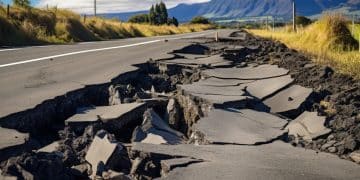How the UN Uses Tech for Disaster Relief in the US

The UN leverages various technologies, including satellite imagery, data analytics, and communication platforms, to enhance disaster response efforts in the US, providing crucial support in coordination and resource allocation.
When disaster strikes the United States, the aftermath requires a coordinated and efficient response. The United Nations plays a significant, though often unseen, role in these efforts, particularly through the use of technology. This article explores how the UN leverages technology for disaster response in the US, enhancing preparedness, coordination, and the delivery of aid to those in need.
The UN’s Framework for Disaster Response in the US
The United Nations operates within a well-defined framework when it comes to disaster response around the globe, and that framework extends to the United States as well. It’s essential to understand the key elements, policies, and collaborative network underpinning these operations.
Core Principles and Mandates
The UN’s disaster response is guided by principles of humanity, neutrality, impartiality, and independence. Mandates are derived from the UN Charter and resolutions, emphasizing the coordination of international humanitarian assistance. However, the UN operates in the US at the invitation and with the consent of the US government, respecting national sovereignty and leadership in disaster management.
Coordination Mechanisms
The UN utilizes several coordination mechanisms to ensure efficient and effective disaster response. These include the UN Disaster Assessment and Coordination (UNDAC) teams, which can be deployed to disaster-stricken areas to assess needs and coordinate international assistance. Additionally, the UN Office for the Coordination of Humanitarian Affairs (OCHA) plays a central role in coordinating humanitarian efforts both at the global and national levels.
- UNDAC teams provide rapid assessments and coordination.
- OCHA coordinates international humanitarian assistance.
- Collaboration with US agencies is paramount.
In summary, the UN’s disaster response in the US is characterized by its adherence to core humanitarian principles, its reliance on established coordination mechanisms, and its commitment to working collaboratively with national authorities.
Satellite Technology for Early Warning and Damage Assessment
Satellite technology provides unparalleled capabilities for monitoring potential disaster situations and assessing the extent of damage following an event. The UN makes extensive use of satellite data in its disaster response efforts in the US.

Real-Time Monitoring
The UN leverages satellite imagery for real-time monitoring of weather patterns, flood levels, and other environmental indicators that can lead to disasters. This early warning capability allows for proactive measures to be taken, such as evacuation orders and the prepositioning of resources.
Damage Mapping and Analysis
Following a disaster, satellite imagery is used to create detailed maps of the affected areas, providing crucial information about the extent of the damage and the needs of the affected population. This information is used to prioritize response efforts and allocate resources effectively.
- Satellite imagery provides real-time monitoring of potential disasters.
- Post-disaster damage mapping aids in resource allocation.
- Analysis helps identify areas of greatest need.
In conclusion, satellite technology is a cornerstone of the UN’s disaster response efforts in the US, providing critical information for early warning, damage assessment, and the efficient allocation of resources.
Data Analytics and Information Management
Data analytics and information management have become increasingly important in disaster response. The UN is at the forefront of using these tools to improve the effectiveness of its efforts in the US.
Predictive Modeling
The UN utilizes predictive modeling techniques to forecast the potential impact of disasters, allowing for better preparedness and resource allocation. These models take into account a variety of factors, including weather patterns, population density, and infrastructure vulnerability.
Information Sharing Platforms
The UN operates several information sharing platforms that facilitate the exchange of data and information between different agencies and organizations involved in disaster response. These platforms ensure that everyone is working with the most up-to-date information, improving coordination and avoiding duplication of effort.
In summary, the UN’s use of data analytics and information management tools enhances its ability to predict, prepare for, and respond to disasters in the US, improving the effectiveness of its efforts and the outcomes for affected populations.
Communication and Coordination Technologies
Effective communication and coordination are essential for a successful disaster response. The UN utilizes a range of technologies to improve communication and coordination among responders in the US.

Satellite Phones and Radios
In areas where traditional communication infrastructure has been damaged or destroyed, satellite phones and radios provide a vital means of communication. The UN equips its response teams with these tools to ensure that they can stay in contact with each other and with headquarters.
Web-Based Coordination Tools
The UN also utilizes web-based coordination tools that allow responders to share information, track resources, and coordinate activities in real-time. These tools improve situational awareness and ensure that response efforts are aligned.
- Satellite phones maintain communication in affected areas.
- Web-based tools facilitate real-time coordination.
- Improved situational awareness leads to better response.
In essence, the UN’s use of communication and coordination technologies enhances its ability to respond effectively to disasters in the US, ensuring that responders can communicate, coordinate, and share information effectively.
Logistics and Supply Chain Management
Efficient logistics and supply chain management are crucial for delivering aid to those who need it most. The UN employs advanced technologies to optimize its logistics and supply chain operations in the US.
Tracking and Monitoring Systems
The UN utilizes tracking and monitoring systems to keep tabs on the movement of relief supplies from warehouses to distribution points. These systems improve transparency and accountability, ensuring that supplies are delivered to the right people at the right time.
Geographic Information Systems (GIS)
GIS technology is used to map affected areas, identify optimal transportation routes, and locate distribution centers. This improves the efficiency of the supply chain and ensures that aid reaches those who need it most quickly.
In summary, the UN’s use of advanced logistics and supply chain management technologies enhances its ability to deliver aid efficiently and effectively to disaster-stricken areas in the US, ensuring that those in need receive the assistance they require.
Training and Capacity Building
Training and capacity building are essential for ensuring that local responders are prepared to deal with disasters. The UN provides training and capacity building programs to US agencies and organizations.
Technology Transfer Programs
The UN facilitates the transfer of technology and knowledge to US agencies, enabling them to better utilize these tools in their own disaster response efforts. This includes training on the use of satellite imagery, data analytics, and communication technologies.
Joint Exercises and Simulations
The UN also participates in joint exercises and simulations with US agencies to test preparedness and coordination. These exercises identify areas for improvement and ensure that responders are ready to work together effectively in the event of a disaster.
- Technology transfer programs enhance local capabilities.
- Joint exercises improve coordination and preparedness.
- Capacity building strengthens overall disaster response.
Overall, the UN’s training and capacity building efforts help to ensure that US agencies and organizations are well-prepared to respond to disasters, improving outcomes for affected populations.
| Key Area | Brief Description |
|---|---|
| 🛰️ Satellite Technology | Used for real-time monitoring and damage assessment after disasters. |
| 📊 Data Analytics | Employed for predictive modeling and efficient information sharing. |
| 📞 Communication Tech | Ensures connectivity in affected areas with satellite phones and web tools. |
| 🚚 Logistics | Optimizes supply chain using tracking systems and GIS for efficient aid delivery. |
Frequently Asked Questions (FAQ)
▼
UNDAC (UN Disaster Assessment and Coordination) teams are deployed to disaster-stricken areas for rapid assessment of needs and to coordinate international assistance, ensuring an efficient response.
▼
The UN utilizes satellite imagery for real-time monitoring of weather and environmental factors, also to provide detailed post-disaster damage mapping, facilitating quick resource allocation.
▼
The UN often uses satellite phones and web-based coordination tools to maintain communication in affected areas where infrastructure is damaged, and it ensures real-time information sharing.
▼
The UN employs advanced logistics, supply chain management and tracking to monitor relief supplies, plus GIS technology for mapping and routing, ensuring aid reaches those who need it most quickly.
▼
The UN offers technology transfer programs to US agencies, teaching the use of latest tech. They also run joint simulated exercises to improve disaster response coordination and readiness.
Conclusion
In conclusion, the UN’s application of technology to disaster relief efforts in the US is a vital component of the overall response strategy, improving preparedness, coordination, and resource delivery. By leveraging advanced tools and fostering international collaboration, the UN enhances the resilience of communities affected by disasters and contributes to a more effective and humane response.





